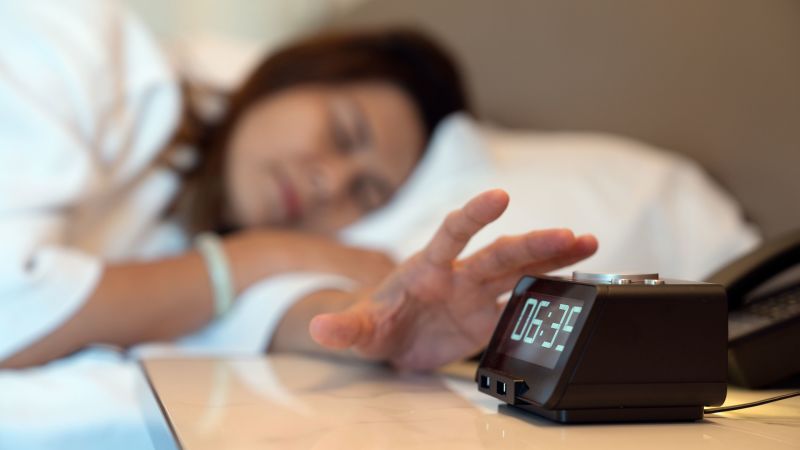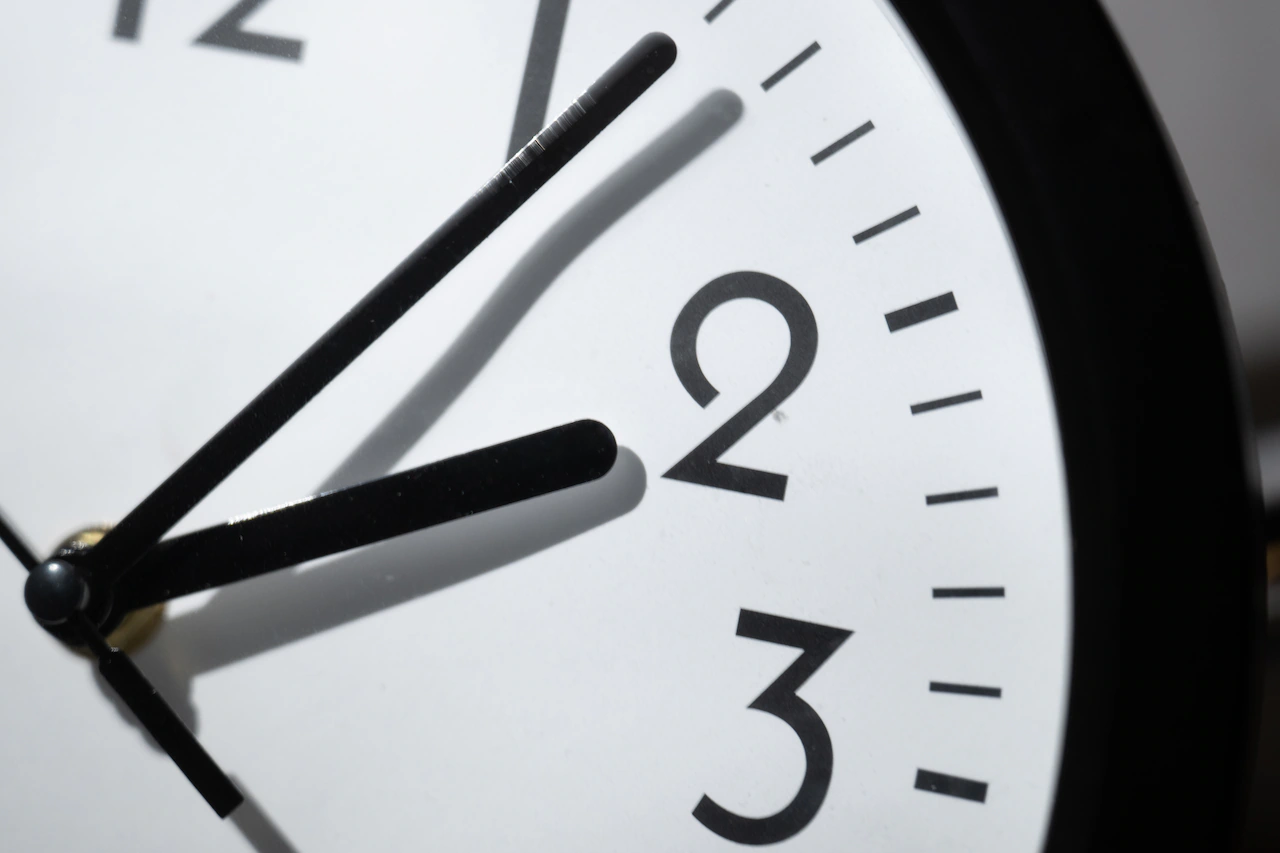Copyright Cable News Network

No, I did not prepare for the end of Daylight Saving Time this past weekend, when most US states set clocks back an hour. Sunrise and sunset now come an hour earlier, despite my protestations. Experts advised planning for this change two weeks ago by shifting your sleeping schedule a bit each night. That did not happen in my house, where the workdays were long, everyone’s calendars were packed and a bad cold threw off our schedule for a week. While the shift technically provided one extra hour of sleep on Sunday, many people didn’t feel that benefit. The sudden change can disrupt your body’s internal clock, leaving you tired in the morning, wide awake at night and sluggish throughout the day. So what to do now that we’ve “fallen back”? How long does it take to adjust to standard time? Should I change how I sleep, eat or exercise during this transition to get back on track? How can adults help children adjust? What if the darker days ahead start affecting your mood? To help get adjusted, I spoke with CNN wellness expert Dr. Leana Wen. Wen is an emergency physician and adjunct associate professor at George Washington University. She previously was Baltimore’s health commissioner. CNN: What happens to your body when the clocks change? Dr. Leana Wen: Your internal clock, also called the circadian rhythm, is closely tied to light and darkness. When sunrise and sunset shift suddenly, your body’s natural rhythm doesn’t immediately keep up. Melatonin, the hormone that helps you feel sleepy, is still being released based on last week’s light schedule. That’s why you might find yourself wide awake later at night and struggling to get going in the morning. It’s similar to jet lag, but instead of going across time zones, you’re changing time zones while staying home. Even a one-hour time change can cause temporary misalignment in your sleep-wake cycle. That can lead to fatigue, reduced alertness and changes in appetite and mood. For people who already sleep poorly and are in sleep debt, the effect can feel magnified. Your body needs time, consistent routines and light cues to reset. CNN: How long does it take to adjust to standard time? Wen: Most people start to feel better within a few days, but some need up to a week or more to fully adapt. Children and teenagers may take longer to adjust since their circadian rhythms are naturally different from adults’. Teens tend to fall asleep later and wake up later, so early school start times combined with darker mornings can make them especially groggy. Parents may notice irritability, difficulty concentrating or early bedtime resistance during the first few days after the change. Older adults may also feel the impact more strongly because their melatonin rhythms shift earlier in the evening. CNN: What can we do to get on track faster? Wen: Consistent bedtimes and light exposure in the morning help you adjust faster regardless of your age. Keep your bedtime and wake-up time consistent, even on weekends if possible. Avoid naps and don’t drink coffee or other caffeinated drinks in the afternoon or evening. These are all part of standard advice for good sleep hygiene, which also includes reducing screen use before bed and creating a regular evening routine, like reading or listening to calming music. A comfortable, cool and dark sleep environment can make a big difference as well since even small amounts of light, noise or discomfort can delay sleep onset. Specific to the time change, go outside or open the blinds right after waking up to signal to your brain that it’s time to be alert. Light is a key regulator of your circadian rhythm, as it suppresses melatonin and helps shift your body clock to the new time. If you wake up before sunrise or work in a dark space, bright indoor lighting or a light therapy lamp used for 20 to 30 minutes in the morning can serve as an effective substitute. CNN: Should I change how I eat or exercise during this transition? Wen: It could help. Consistent mealtimes help your metabolism stay synchronized with your new wake-sleep schedule. Try to eat breakfast soon after waking, keep mealtimes regular, and avoid heavy meals right before bed. Exercise is another powerful cue for your body clock and an excellent way to improve sleep quality. Morning or afternoon workouts can help you feel more awake and improve your mood. Morning exercise may have the edge since it could also get you outdoors and exposed to natural light. It’s still good for you to exercise even if you only have time later in the day. That’s fine, though keep in mind that vigorous exercise within a few hours of bedtime can be too stimulating and make it harder to fall asleep. If you tend to crave sugary foods or caffeine to fight fatigue after the time change, try to step outside for a quick walk or get light exposure first. Both naturally increase alertness without disrupting sleep later. CNN: Does losing daylight affect more than just sleep? Wen: Yes. The shift to shorter days can negatively affect mood and energy levels, too. According to the US National Institutes of Health, less daylight exposure can slow production of serotonin, which is a brain chemical that supports mood. Many people experience a mild drop in energy or motivation during the late fall and winter, sometimes called the “winter blues.” For some, the change can trigger a more serious condition known as seasonal affective disorder, or SAD. It typically appears in late fall and peaks in midwinter, and it can cause persistent sadness, low energy and changes in appetite and sleep. CNN: How can families help children adjust? Wen: Consistency and light exposure are key here, too. Stick with familiar bedtime routines like bath, story and lights out, even if the bedtime is temporarily off. Avoid introducing new or longer naps; this can make it harder for kids to fall asleep at night and delay their adjustment. In the mornings, open window shades and turn on the lights as soon as kids wake up. Try to get them outside for a few minutes of fresh air and natural light before day care or school. That early light exposure helps reset their internal clock. If your child starts going to bed earlier than usual after the time change, they may also start waking earlier. Gradually shifting bedtime and wake-up time by 10 to 15 minutes over several nights can help smooth the transition and get everyone back on schedule. CNN: When should someone seek help for sleep or mood issues after the time change? Wen: If fatigue, poor sleep or low mood persist for more than two weeks, it’s worth checking in with your primary care provider. Chronic sleep loss can affect heart health, immune function and mental well-being. Persistent trouble falling asleep or staying asleep can be a sign of insomnia or another sleep disorder. For mood changes, especially feelings of sadness or loss of interest in usual activities, your health care provider can screen for seasonal affective disorder or other causes. Treatment might include light therapy, counseling or short-term medication, depending on severity, duration and impact on your everyday life. Early support makes it easier to recover and may help prevent these patterns from recurring each year.



